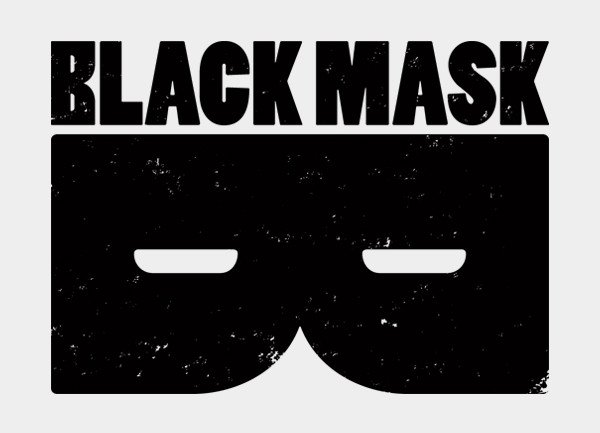By SAUL HANSELL ANDY STEWARD, a successful London computer consultant and sailboat racer, became exasperated when trying to watch his favorite sport on television. There were a few half-hour recaps of some major sailing races, but they were always shown late at night.
Mr. Steward looked into creating a sailing channel on the Sky satellite service in Britain, but his idea was soon dead in the water. He would have had to pay £85,000 (nearly $150,000) to start the channel and £40,000 a month (nearly $70,000), as well as the production costs. That was a lot of money for an untested concept.
But in January, he did introduce a sailing channel, one that is rapidly filling with sailing talk shows, product reviews, programs on sailing techniques and, most important, intense coverage of the sort of smaller races that don’t make it onto traditional television.
His new channel, however, will not be available over the air. And it won’t be found on cable or even on satellite, at least not yet. The channel, called Sail.tv, is broadcast only on the Internet, which enables video to reach a much larger worldwide audience at a much lower initial cost than a satellite channel. Because “we didn’t have any idea how big the audience would be,” Mr. Steward said, he wanted to keep his expenses as low as possible. “Internet television is an investment we can grow into,” he said.
In the last six months, major media companies have received much attention for starting to move their own programming online, whether downloads for video iPods or streaming programs that can be watched over high-speed Internet connections.
Perhaps more interesting — and, arguably, more important — are the thousands of producers whose programming would never make it into prime time but who have very dedicated small audiences. It’s a phenomenon that could be called slivercasting.
In 2004, Wired magazine popularized the phrase “the long tail” to refer to the large number of specialized offerings that in themselves appeal to a small number of people, but cumulatively represent a large market that can be easily aggregated on the Internet. Plotted on a graph along with best sellers, these specialized products trail off like a long tail that never reaches zero.
Indeed, the Internet’s ability to offer an almost infinite selection is part of what makes it so appealing: people can find things that don’t sell well enough to warrant shelf space in a neighborhood music store or video rental shop — think of the obscure books on Amazon.com. The ease of digital video production and the ubiquity of high-speed Internet connections are sending the long tail of video into the living rooms of the world, live and in color.
“The next wave of media is to unleash the power of serving people’s special interests,” said John Hendricks, the chief executive of Discovery Communications, which is developing a series of specialized video services. “Every time I walk into a Borders bookstore, I spend a lot of time looking at the magazine rack — because staring at you are all the passions of America. The bride who is about to get married, there is a magazine for her. And for the person who is a little older, there are wonderful travel and leisure magazines.”
Already, there are specialized video services serving hundreds of specialties, including poker, bicycling, lacrosse, photography, vegetarian cooking, fine wine, horror films, obscure sitcoms and Japanese anime. There is also a growing market for Webcasts of local news and entertainment from every country and in every language, aimed at expatriates.
“We’re adding two or three new channels a week,” said Iolo Jones, the chief executive of NarrowStep, a company in London that provides technology and support for specialized Webcasts. Among his clients is Sail.tv, which says it attracted 70,000 viewers in its first month.
NEARLY 15 years ago, when the advent of digital cable offered the possibility of 500 channels, many people were skeptical that there would be enough programs to fill them. But then came specialized broadcasters — including the Speed Channel (for auto racing fans), the Military Channel and Home and Garden Television — and now cable and satellite systems are largely full.
“It has become almost impossible for a channel to increase its distribution the old way,” said Lauren Zalaznick, the president of Bravo and Trio, two cable channels owned by NBC Universal. “To get distribution it takes a lot of effort and negotiation. You have to give up a lot to get very little.”
Indeed, after DirecTV dropped Trio, a channel devoted to pop culture, among other things, Ms. Zalaznick decided to move it from pay-TV systems to the Internet. “To survive we had to find a new way,” she said. The new way, she quickly realized, could also help Trio resolve its identity crisis. The cable channel mixed documentaries about pop culture, original music programming, reruns of obscure television shows and a fair bit of programming aimed at gay and lesbian viewers.
Other big media companies are also creating narrower Internet extensions of their channels. Scripps Networks, which runs the HGTV network, for example, created HGTVPro, with programming aimed at contractors and builders.
Discovery Communications, which has been a master of the current system, creating 15 different cable channels including Animal Planet and Discovery Health, is now exploring even more specialized services over the Internet. One will be introduced tomorrow for $9.95 a month. It will offer 30,000 video clips excerpted from its library of documentaries and other educational programs to help grade school and high school students with their homework. In the future, other services will offer content focused on narrow topics in travel, science and health.
Discovery, Mr. Hendricks says, is in a good position to create such services because of its large archive. “We have a wealth of programming just related to cancer, just related to Alaska and so on,” he said.
In addition to offering Internet distribution, Discovery will start to broadcast some of these programs late at night on its regular channels and encourage people to record them, he said.
To be sure, there are doubters. “I’ve never been a believer that we should create channels for all these niches like beach volleyball,” said John Skipper, a senior vice president of ESPN, a unit of the Walt Disney Company. “They just don’t pencil out. Because if you have 12,000 people, you can’t afford to do it. And if you can’t afford to do it, you can’t make any money on it.”
One reason that ESPN has shied away from this sort of niche programming, he said, is that its brand stands for a level of high-quality visual production that would be difficult for small channels to afford. Indeed, ESPN has been investing millions of dollars to produce programs in high-definition formats.
But reticence by some big media companies is making room for independent programmers to explore all sorts of niches.
Marie Oser, a vegetarian cooking writer and food promoter, has been creating television programs for cable networks for several years. She is now working on developing a site, VegTV.com, which features 160 clips, mainly cooking demonstrations, as well as coverage of events like the Tofu Festival in Los Angeles and interviews about vegetarianism with celebrities including Jane Goodall and Daryl Hannah. The most popular viewing times, perhaps not surprisingly, are at lunch time and just before dinner.
Viewers call up about 1,000 videos each day, Ms. Oser said. “That’s not huge,” she said, “but it’s growing.” She makes money promoting her books, the food products she creates and the products of paying sponsors.
She offers her video by way of the Roo Group, a New York company that handles the technology for storing and sending the video to users; it also sells advertising on behalf of VegTV and a stable of other specialized sites. In the past, Roo has brought American Express, Honda and other national advertisers to Ms. Oser’s site, although no major campaigns are running now. Roo also provides links to her programming from some other sites it works with, including Local10.com, the site of WPLG, a Miami television station, which supplements clips from its local news with additional video from Roo.
Another Roo-based slivercaster is Yuks TV (www.yuks.com), started by Dailey Pike, a Los Angeles comedian who earns most of his money these days warming up studio audiences for sitcoms. Mr. Pike said he was outraged when he saw a Comedy Central poll asking viewers to rate the 100 best comedians of all time. “Bob Hope was well below Bill Maher,” he said.
He decided to create programming around clips from classic comedy television shows that have fallen into the public domain, including routines by Jack Benny, Red Skelton and George Burns with Gracie Allen. Mr. Pike also has some exuberant classic commercials, like ones featuring the dancing Lucky Strike cigarettes and the skydiver who delivered a can of Colt 45.
At first, he, too, made a program for late-night cable television, but in 2004 he switched to the Internet. The site has had as many as 200,000 visitors in a month, he said, but only if he buys advertising to attract them. “I can’t make enough money to cover my costs at this point,” he said. But he hopes that this will change, he said, as Roo builds up its advertising sales prowess.
Robert Petty, Roo’s chief executive, has been trying to build an Internet broadcast system for years, but the idea has attracted attention only recently. “In the last few weeks, we’ve had a lot of people in saying they want to build out five TV stations for broadband,” said Mr. Petty, a former executive at Telstra, the Australian telephone company. “We went for a lot of years without any attention at all. We’re really enjoying it now.”
He added that viewers were quickly warming up to Internet video. “Now we are talking about three- to five-minute videos,” he said, “but there’s no question that in a year’s time we are talking about 22-minute to one-hour videos.” Roo works with 100 sites, which show 40 million videos a month, Mr. Petty said.
“The real analogy here is not with television but with magazine publishing,” said Mr. Jones of NarrowStep. “Narrow publications can get very high rates.”
In any case, companies that have thrived largely by selling specialized DVD’s, often through obscure mail-order dealers, are now turning to the Internet as well. One company, Brain Damage Films, which produces and distributes horror films too obscure to show in theaters, has started renting its movies through Akimbo, a service that uses the Internet to distribute video programming. (Brain Damage’s biggest hit so far has been “Death Factory,” which involves an accident in a chemical plant and a worker who starts to mutate.) Akimbo can send programs either to a specialized set-top box that it sells for $69 or to a PC with Microsoft Media Center software.
Darrin G. Ramage, the chief executive of Maxim Media Marketing, which runs Brain Damage, says the company has no choice but to move to online distribution. “The bottom line is that for independent horror movie fans — people from 18 to 25 — the Internet is where they are,” he said. “Anything they want to know about, they go on the Internet. If they want a movie, they go on the Internet.”
Online distribution now accounts for 10 percent of Brain Damage’s revenue, he said, and the company plans to start selling downloadable versions of its films directly from its Web site.
Kostas Metaxas is also shifting his video production online, although he serves an older audience more interested in diamonds than blood. Mr. Metaxas runs Exero, an Australian company that produces interviews with jewelers, fashion designers, chefs and others who cater to the preoccupations of the rich. “It’s eyeball candy, basically,” he explained.
He has accumulated 500 such interviews and packaged them for cable networks, DVD sales and in-flight viewing on Malaysia Airlines. Exero, too, is now finding a new audience through Akimbo, offering some programs free and selling others.
Instructional videos are also becoming available on the Web. TotalVid, which is owned by Landmark Communications, the parent of the Weather Channel, offers 2,300 programs for download, many of them videos teaching everything from how to play a guitar to the best techniques in tae kwon do. “There is a huge group of men who aspire to do martial arts,” said Karl B. Quist, TotalVid’s president. “They are not going to take lessons at a dojo, but they will watch a 60-minute video.”
Viewers can pay for limited-time access to individual TotalVid programs, which include videos on extreme sports, music, parenting and travel, or they can pay $9.95 a month for a subscription that allows unlimited viewing of its films.
“I offered to help my son’s basketball team, and I wound up as head coach,” said Michael Katz, a marketing consultant in Hopkinton, Mass. A friend recommended TotalVid, and Mr. Katz used it to find a 45-minute video about how to coach youth basketball.
“The production quality wasn’t great, but I could actually see the demonstrations of how to do the drills,” he said, boasting that his team finished third in its league.
Looming over all of the smaller companies that distribute specialized video is the question of Google’s ultimate role. Google’s early video service was criticized as hard to use, but it is nonetheless attracting a lot of programming from major networks as well as independents — and of course, it has a huge traffic flow that no independent site can match. Google allows programmers to offer video free, to rent it or to sell copies that viewers download to their computers; Google gets a commission for videos that are sold and rented. Eventually, it plans to sell advertising on some videos as well, sharing the revenue with the producers.
Mr. Quist, for one, says he plans to deal with Google as a partner rather than as a competitor by making much of the TotalVid’s accumulated content available for rent through Google Video. Some producers who license programs to TotalVid can cut out the middleman, of course, and deal with Google directly. Mr. Quist said he hoped to help these producers market their programming on Google as well as on Apple’s iTunes and other online video stores.
Among the niche audiences that are considered both large and attractive to Internet broadcasters are immigrants and expatriates seeking news and entertainment from their home countries. But arranging cross-border deals, especially those in less-developed countries, can be difficult, complex and sometimes harrowing.
Kaleil Isaza Tuzman was reminded of this last month when someone stole his watch while he was taking a shower in a shared bathroom at his hotel in Khartoum, Sudan. Still, Mr. Tuzman said he considered the trip a success because he was able to secure the rights to broadcast Sudan TV, the national television station, on JumpTV, the company he runs.
JumpTV, which is based in Toronto, has evolved into a service that offers live Internet transmission of television station broadcasts from more than 60 countries to expatriates around the world. Among its channels are VTV4 from Vietnam, Channel 10 from Greece, Amazon Sat from Brazil and, perhaps most notably, the original Arabic-language version of Al Jazeera, the news channel based in Qatar.
This service has made a great difference to Joe Wityk, 83, of Calgary, an immigrant from Ukraine.
His son, Steve Wityk, said, “My dad has been bugging me for 20 years to get TV from the Ukraine.” The younger Mr. Wityk did not want to buy a receiver to get the specialized satellite channels, which could have cost as much as $1,000, he said. So he was delighted to find that he could subscribe to TV5 from Ukraine through JumpTV. He installed an inexpensive computer in his home that he connected through a hole he drilled in his ceiling to the television set of his father, who lives above him.
“He had subscribed to Ukrainian newsletters but by the time the news got to him it was old,” the son said. “The TV is much better.”
MR. TUZMAN travels the world to manage relationships with television stations and oversee construction of the global network of satellite receivers and Internet servers needed to operate the system. He declined to say how many subscribers he had, but each typically pays $9.95 a month for a single channel, or up to $26 a month for a package of related channels.
Mr. Tuzman — a founder of GovWorks.com during the dot-com boom, allowing people to pay parking tickets and otherwise deal online with local governments — faces competition from cable and satellite services. That is especially the case in the United States, where there is already much programming for the largest ethnic groups. So he focuses on smaller groups.
“The Bengali community in the U.S. is not the size of Dominicans’,” he said. “But guess what? They can’t watch Bengali TV anywhere else.” Moreover, the audience for the Internet is worldwide.
“If you are a Mexican in North America, you are much better served by cable and satellite than if you are a Moroccan in Europe,” he said. “Our company is a very exciting company because we aggregate a lot of different audiences, but any one of those audiences is a very small niche.”



